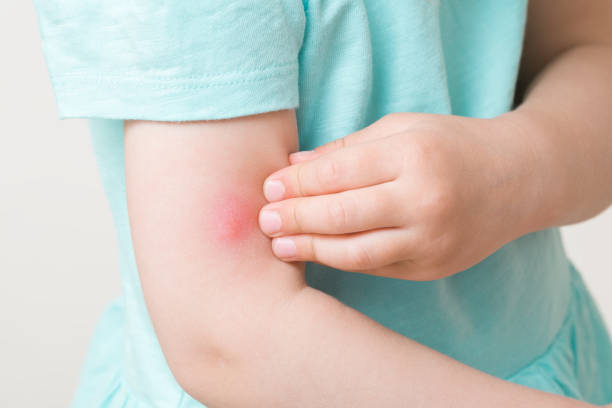Tick bite rashes can be a serious health concern, particularly because they can be the result of tick-borne illnesses like Lyme disease. Understanding the symptoms of a tick bite rash, as well as effective treatments, is essential for maintaining good health.
Symptoms of a Tick Bite Rash
The symptoms of a tick bite rash can vary depending on the cause of the bite and the individual’s immune response. In many cases, a tick bite rash will appear as a red, raised bump that is surrounded by a bull’s eye pattern. This pattern may be accompanied by itching, pain, and swelling.
In some cases, a tick bite rash can spread rapidly, forming a large, raised bump that is filled with fluid. This type of rash is often accompanied by a fever, headache, muscle and joint pain, and fatigue. In severe cases, the rash can spread to other parts of the body, including the face, neck, and arms.
If you experience any of these symptoms after being bitten by a tick, it is important to seek medical attention as soon as possible. In many cases, tick-borne illnesses can be effectively treated if they are caught early, so early diagnosis and treatment are essential.
Treatment for a Tick Bite Rash
The treatment for a tick bite rash will depend on the underlying cause of the bite. In many cases, a simple over-the-counter topical cream or ointment can be used to relieve itching and swelling. In more severe cases, however, a more potent prescription-strength topical or oral medication may be required.
If you have been bitten by a tick and are experiencing symptoms of a tick-borne illness, your doctor may prescribe antibiotics to help clear up the infection. Antibiotics can be very effective at treating tick-borne illnesses, particularly if they are caught early. In some cases, however, the bacteria that causes the illness may be resistant to antibiotics, and other treatments may be required.
In some cases, a tick bite rash can cause a serious allergic reaction, known as anaphylaxis. If you experience symptoms of anaphylaxis after a tick bite, such as difficulty breathing, rapid heartbeat, or hives, seek medical attention immediately. Anaphylaxis can be life-threatening, and prompt medical treatment is essential.
Preventing Tick Bites and Tick-Borne Illnesses
The best way to prevent tick bites and the symptoms of tick-borne illnesses is to take steps to avoid exposure to ticks. When spending time outdoors in areas where ticks are common, such as forests, fields, or parks, be sure to wear protective clothing, such as long pants and sleeves, and apply insect repellent to your skin.
If you have pets, be sure to check them regularly for ticks and take steps to prevent tick exposure, such as using tick collars or topical tick preventatives. If you do find a tick on your pet, be sure to remove it carefully and dispose of it properly, as ticks can transmit illnesses to humans as well as pets.
Final Thoughts
Tick bite rashes can be serious health concerns, particularly because they can be the result of tick-borne illnesses like Lyme disease. Understanding the symptoms of a tick bite rash, as well as effective treatments, is essential for maintaining good health. If you have been bitten by a tick and are experiencing symptoms, seek medical attention as soon as possible to receive an accurate diagnosis and appropriate treatment.

 Home
Home Health
Health Diet & Nutrition
Diet & Nutrition Living Well
Living Well More
More












